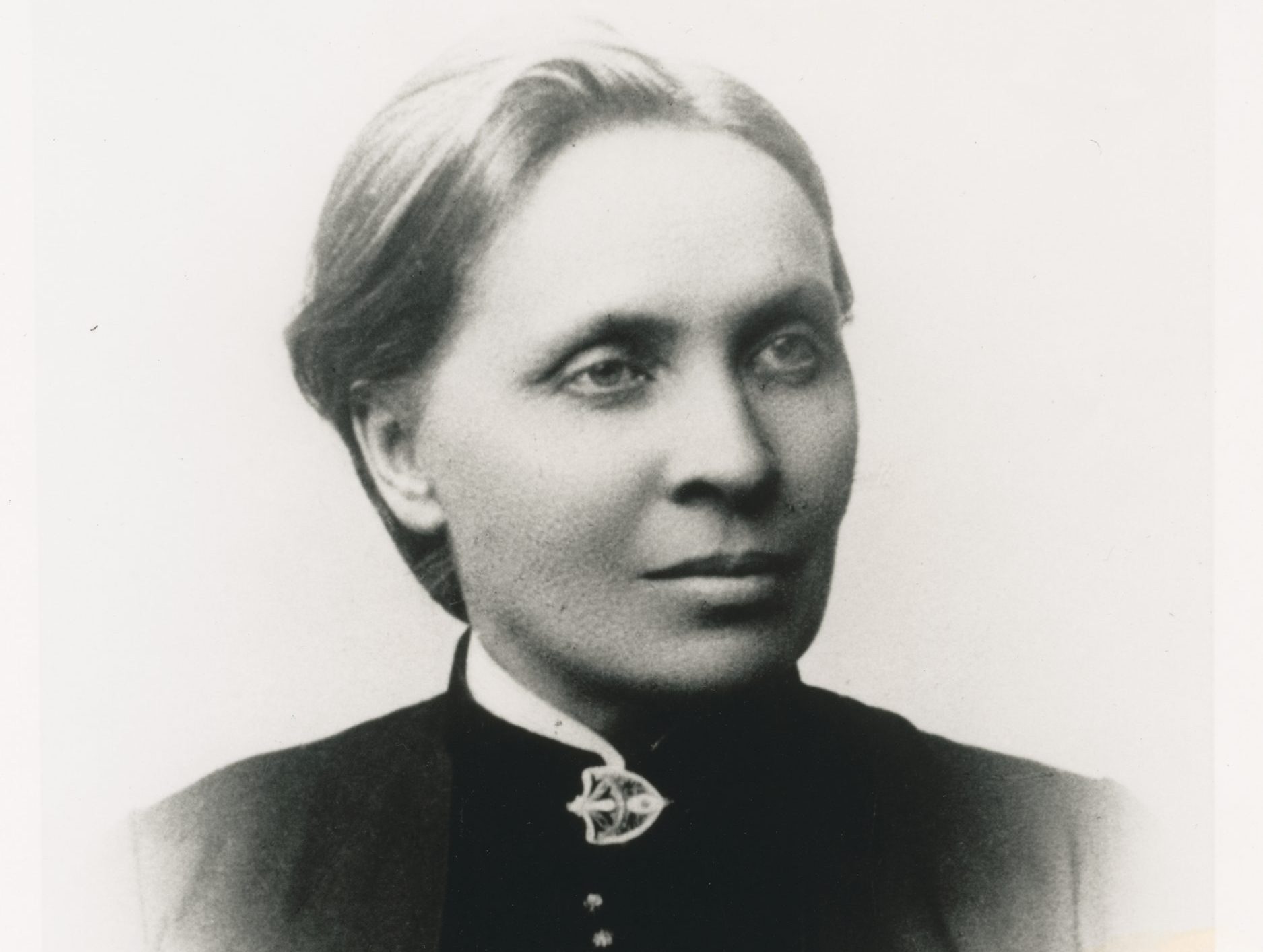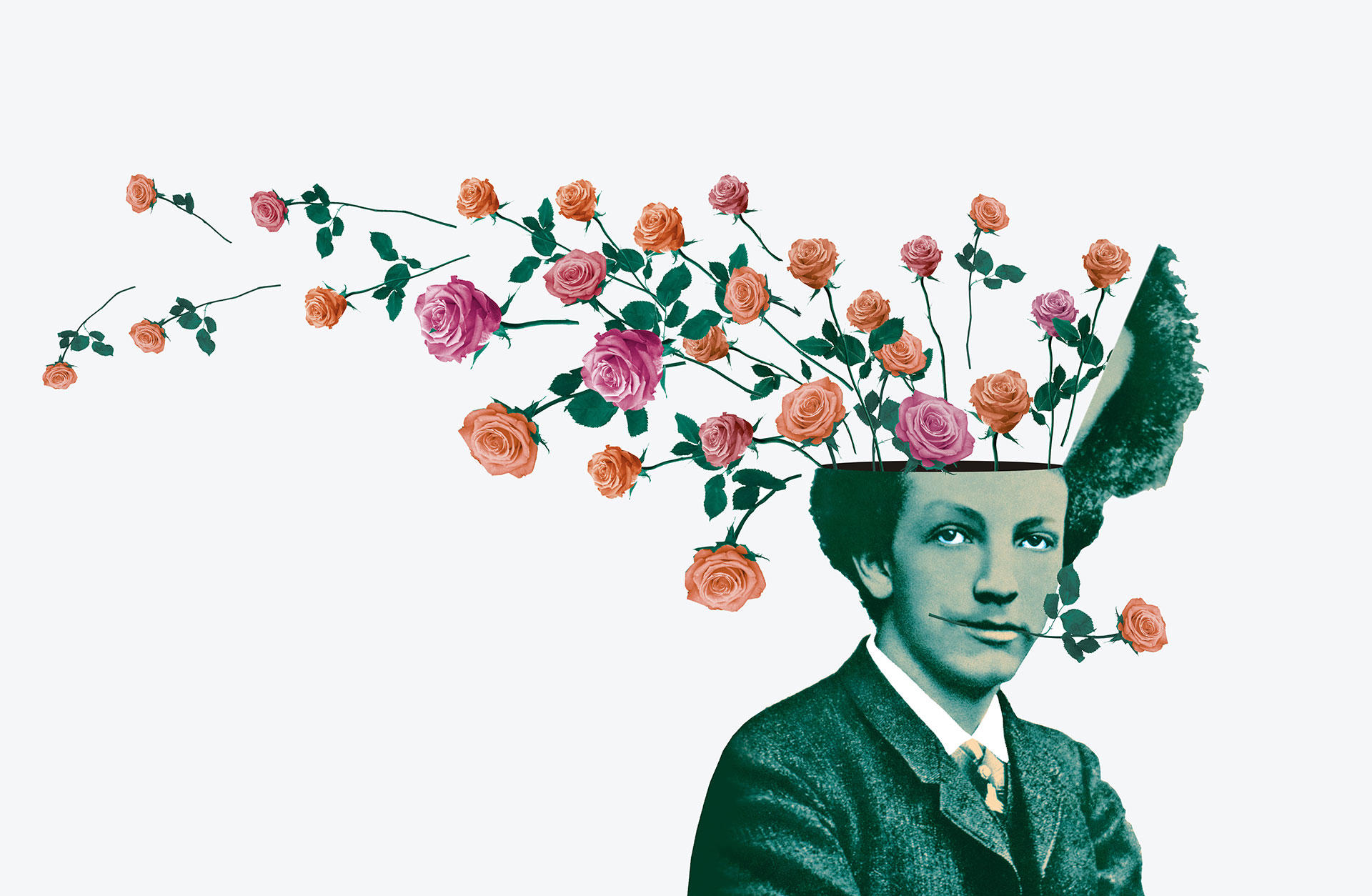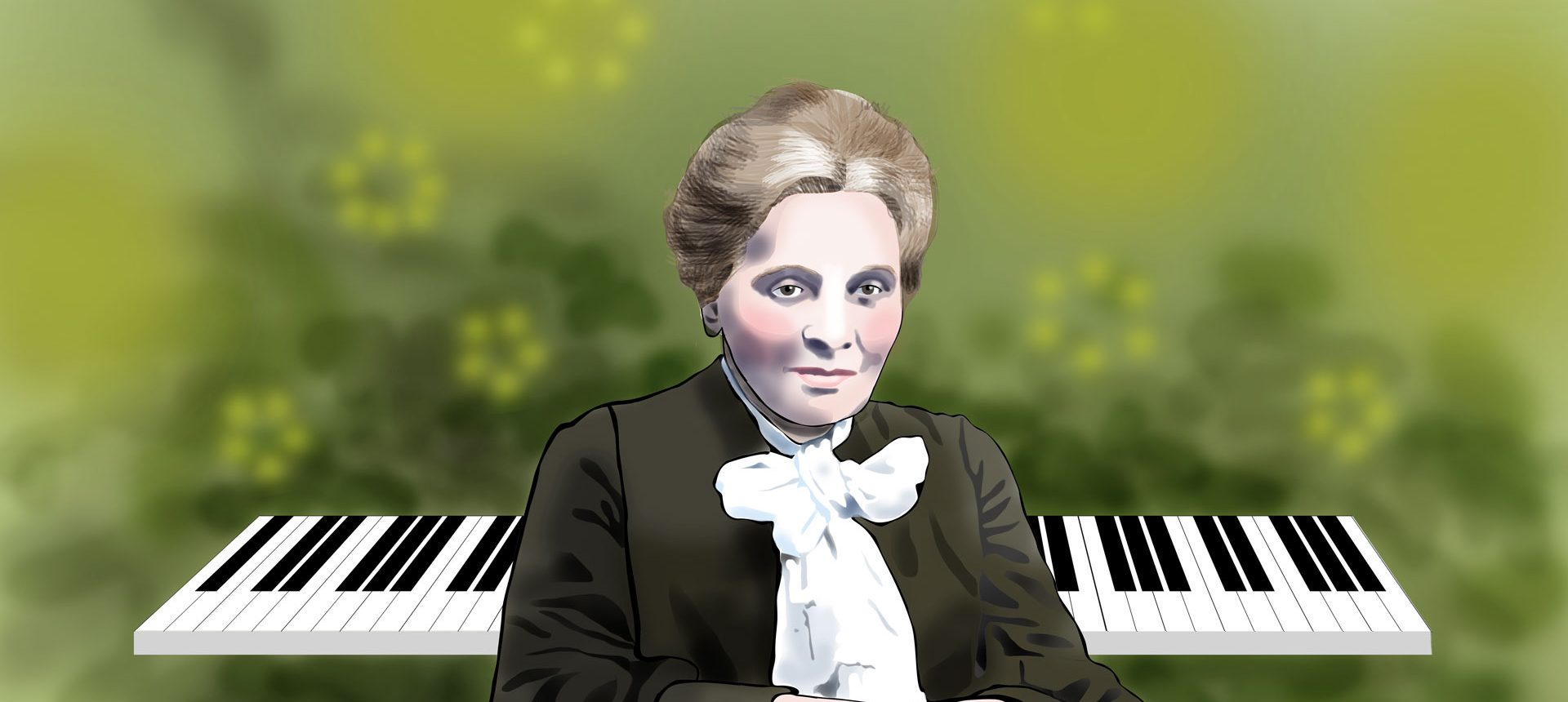It is said that the liberal visions in Visby in the 1840s shaped Elfrida Andrée. She was determined early on and carved out a professional life for herself. To her help, she had father Andreas, provincial doctor in Visby who followed the debate on women’s rights in the Visby Weekly. He read up on the political events in countries such as England, Germany and France. Both his daughters had the talent to become successful musicians. What reason was there to stop them?
Elfrida Andrée was born at S:t Larsgränd in Visby in 1841 and traveled to Stockholm as a 14-year-old to get an education. She began organ studies at the music conservatory, which only a few years earlier had started accepting female students. Two years later, she became the first woman in Sweden to graduate as an organist. When she then applied for a job, and was rejected, the desire to enter male territories only grew. She applied with her father’s help to become a telegraph operator. After a long correspondence with the Swedish Telegraph Agency’s director general, she got her way. She never entered a position as a telegraph operator, but now the opportunity was open to Swedish women.
“It would be easier to tear a piece out of the rock than to tear from me my ideal idea: the Elevation of the Female family.”
–Elfrida Andrèe, 1870
She finally got her first job as an organist in the Finnish Reformed Church in Stockholm, thanks to a law change. In 1867, the cathedral organist position in Gothenburg was advertised. Elfrida Andrée applied in strong competition with seven men and got the position, as the first female cathedral organist in Europe. To Elfrida Andrée’s side rushed, among others, editor-in-chief of Gothenburg’s Handels- och Sjöfarts Tidning, the very liberal politician and writer S.A. Hedlund (1821–1900). Elfrida quickly became a member of his circle of friends.
Elfrida Andrée stayed in Gothenburg for the rest of her life and remained the city’s cathedral organist until her death. By then she had served for 62 years.

More about Elfrida Andrée
Elfrida Andrée had already started composing as a child. She studied with Ludwig Norman and Niels Wilhelm Gade. Over time, she would write about 20 solo songs, seven piano collections, several organ pieces and choral songs with or without accompaniment, including two masses in Swedish. Andrée’s big breakthrough came with the premiere of the ballad Snöfrid in 1879 with text by Rydberg. It is about the struggle between the light and the dark forces, about fighting for one’s cause without giving in to the temptation to seek peace or give up one’s pursuit.
She wrote two symphonies for orchestra and two for organ and orchestra. The orchestral symphony in A minor (No. 2) was first performed in Gothenburg in 1893 and was performed with great success in Dresden in 1904 with Andrée herself as conductor. At an international composition competition in Brussels in 1894, she received all three prizes for the organ symphony in E flat, the A minor symphony and the string quartet in D minor.
She also wrote an opera based on Esaias Tegnér’s poem Fritiof’s Saga to lyrics by Selma Lagerlöf. It was never a success in its day, but has survived as an orchestral suite. In 2019, Fritiof’s Saga was performed in its entirety at Gothenburg Opera.
“When her string quartet in D minor was finally played in August 1895 at a “Women’s Exhibition” in Copenhagen, it was only after great difficulty that they managed to get an all-female quartet together, but the male reviewer completely dismissed the performance of the already eight-year-old work because “it was too advanced for women”. The quartet has a romantically dense sound that may bring to mind Brahms and Schumann. Today we know that her quartet is a true masterpiece.” (Stig Jacobsson)
But even greater than her work as a composer is perhaps her role as a key figure in Gothenburg’s musical life around the turn of 1900. In addition to leading the cathedral’s choirs, giving organ concerts and training a long line of organists, she worked as a conductor. In 1897, she started her famous folk concerts in collaboration with the Gothenburg Workers’ Institute. The ticket price was low and everyone could afford to come and listen. There were no less than 800 of these folk concerts. She conquered an increasingly stronger position and got the chance to conduct Gothenburg’s Orchestra Association in 1909 and 1913 in the old concert hall, Excercishuset on Heden.
Her sister Fredrika was by this time a celebrated opera singer and married to Fredrik Stenhammar, Wilhelm’s uncle. Together, the sisters belonged to the Swedish cultural elite.
When Elfrida Andrée died in January 1929, she was one of the historical women who paved an important path for others. Thanks to her, the foundation was also laid for Gothenburg’s orchestral life, a cultural heritage that is now richer and more varied than ever a hundred years later.
Listen to her music
Let the playlist tempt you with the very best of Elfrida Andrèe

The composers behind the most famous masterpieces
Take the opportunity to get to know some of the composers behind the most famous classical masterpieces and listen to their music. Maybe it will be the start of a lifelong friendship.

